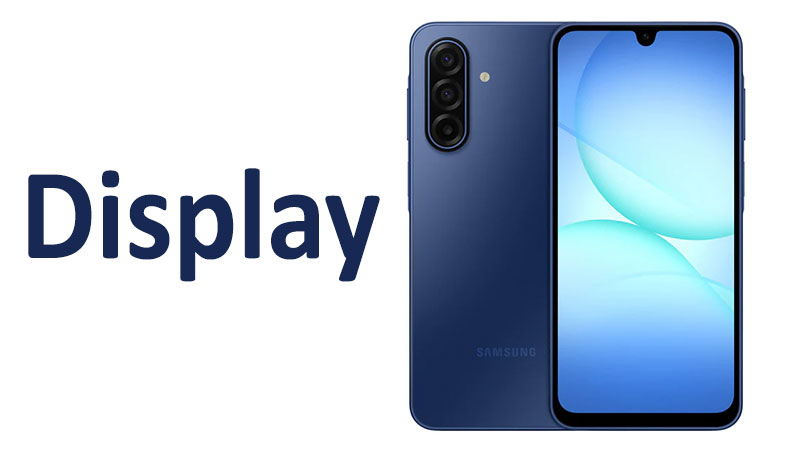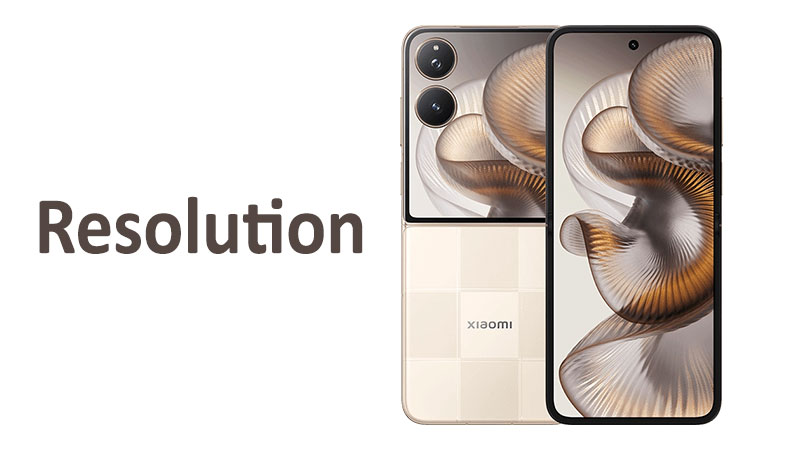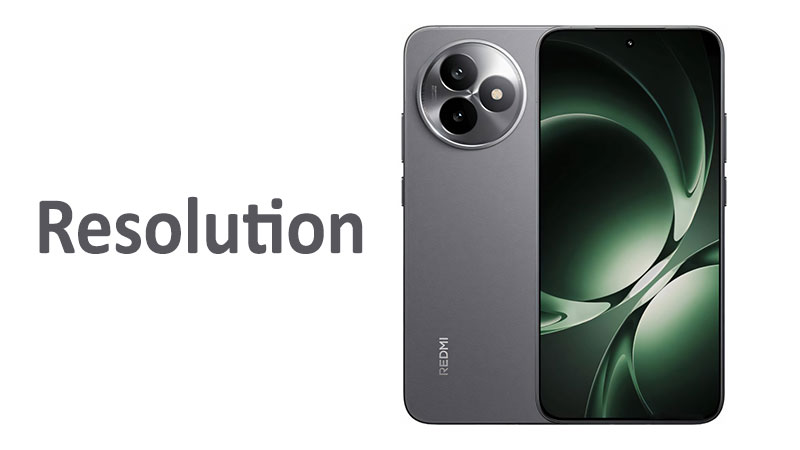The Samsung Galaxy A17 display stands out as a key feature of this new mid-range device. This comprehensive review examines its resolution, quality, and advanced features in depth. Understanding the screen’s capabilities is crucial for potential buyers. After all, the display remains the primary interface for any modern smartphone. We will break down every technical specification. This article helps you determine if the Galaxy A17 screen meets your daily needs.
The smartphone market constantly pushes visual boundaries. Consequently, the display quality often dictates the overall user satisfaction. Samsung positions the Galaxy A17 strategically within the competitive mid-range sector. It includes high-end screen technology to appeal to demanding consumers. We focus on how the Super AMOLED panel, the refresh rate, and the physical protection perform in real-world scenarios. This analysis gives you the insight needed to make an informed choice.
Unpacking the Super AMOLED Excellence
The screen type is arguably the most defining element of the Samsung Galaxy A17 display quality. Samsung chose Super AMOLED technology for this particular model. Super AMOLED panels offer significant, measurable advantages over traditional Liquid Crystal Display (LCD) screens. Specifically, they provide perfect, deep, inky blacks. This happens because AMOLED pixels generate their own light independently. When a pixel needs to display black, it simply switches itself off completely. This design difference results in an infinite contrast ratio.
Super AMOLED screens produce vibrant and highly saturated color reproduction. Users experience rich, punchy colors immediately upon looking at the screen. These vivid hues make all forms of media consumption far more enjoyable. Videos, photos, and demanding mobile games look dynamic on the Galaxy A17 display. The panel offers a high degree of color accuracy in its default, balanced settings. However, Samsung smartly includes options within the display settings. Users can choose to make the colors even more saturated. This choice appeals greatly to those who prefer a bolder, more striking visual experience.
Super AMOLED vs. Budget LCD Competitors
The adoption of Super AMOLED gives the Galaxy A17 a strong, competitive edge. Many budget and even some mid-range competitors still utilize cheaper, older LCD panels. LCDs fundamentally require a constant backlight to function. They cannot produce true black because the backlight always shines through the panel. Their dark areas appear grayish compared to the absolute black of an AMOLED screen. Therefore, the A17’s Super AMOLED screen provides superior visual depth. It also delivers significantly better contrast in dark environments. This high-end technology brings a feature often associated with flagship phones to an accessible price point.
The benefits extend beyond just aesthetics. Power efficiency improves when viewing dark content. Since AMOLED pixels switch off to show black, they conserve battery life. This is especially true when using dark mode interfaces. The vibrant quality and inherent efficiency make the Super AMOLED panel a primary selling point for the Galaxy A17.
Resolution and Fine Detail Clarity
The Samsung Galaxy A17 features a resolution of 1080 x 2340 pixels. This standard is universally recognized as Full High Definition Plus (FHD+). This resolution ensures a consistently sharp and highly detailed viewing experience across all applications. It meets the current quality standard for mid-range smartphone displays. The screen utilizes a 19.5:9 aspect ratio. This design provides a tall, modern viewing space perfect for scrolling and media.
Analyzing Pixel Density (385 ppi)
The display measures a generous 6.7 inches diagonally. This significant size, combined with the high FHD+ resolution, yields a pixel density. The calculated density stands at approximately 385 pixels per inch (ppi). This particular density is excellent for comfortable, strain-free viewing. Individual pixels become virtually invisible to the naked eye at a typical smartphone viewing distance. Text rendering appears exceptionally crisp and clear. Graphics, intricate details in high-resolution images, and game assets render smoothly and accurately. This impressive high pixel density is a key component. It contributes greatly to the perceived quality of the overall Galaxy A17 display.
Resolution Comparison: A17 vs. Older Generation
The Galaxy A17 responsibly maintains the FHD+ standard. This standard was established by its direct predecessors, such as the widely popular Galaxy A15. Samsung wisely avoids the temptation of downgrading the resolution to cut manufacturing costs. Some competing smartphone brands might opt for a lower HD+ resolution in this price category. The A17 avoids this noticeable compromise completely. It delivers true high-definition clarity that users expect. FHD+ proves more than sufficient for high-quality video streaming from major platforms. Users will definitely appreciate the sharpness when reading long e-books or viewing detailed spreadsheets.
The Fluidity of the 90Hz Refresh Rate
The refresh rate dictates how many times the screen updates its static image per single second. The Samsung Galaxy A17 display features a competent 90Hz refresh rate specification. This means the screen refreshes 90 times every second, fifty percent faster than older screens. A higher refresh rate translates directly and immediately into a perceptibly smoother user experience.
Enhanced Interactivity and Smooth Motion
Scrolling through large social media feeds or lengthy web pages feels significantly more fluid at 90Hz. System animations, such as opening and closing apps, appear less choppy. They look more natural and polished to the user’s eye. The entire phone feels noticeably snappier and more responsive to every touch input. This substantial benefit also extends gracefully to casual mobile gaming. Fast-paced visuals in action games look cleaner, offering a more engaging and competitive experience. The 90Hz rate is a substantial, non-negotiable upgrade from the now-dated standard 60Hz rate found on older devices.
90Hz vs. 120Hz: A Strategic Compromise
The 90Hz rate represents a strong, viable mid-range offering. However, it is important to note that some premium mid-range competitors now feature 120Hz displays. The visual jump from 60Hz to 90Hz is profound, immediate, and highly valued by users. Conversely, the incremental difference between 90Hz and 120Hz is much less pronounced. Most casual or general users barely notice the difference. Samsung’s implementation of 90Hz provides a perfect operational balance. It offers noticeable, buttery smoothness without dramatically increasing the device’s critical battery drain. This choice is an intelligent compromise for the overall Galaxy A17 screen package. It prioritizes power efficiency alongside demonstrable user satisfaction.
Screen Size and Immersive Design
The Samsung Galaxy A17 display measures a generous 6.7 inches when measured diagonally. This large screen size is a significant, undeniable selling point for media consumption enthusiasts. It provides an expansive, theatre-like canvas for watching videos, playing games, and serious multitasking. Modern smartphone users increasingly demand larger displays for better content consumption habits.
High Screen-to-Body Ratio for Immersion
The phone proudly boasts an impressive screen-to-body ratio of approximately 86.0%. This important metric describes exactly how much of the front surface area is occupied by the actual display panel. A consistently high ratio indicates minimal, barely noticeable bezels or borders surrounding the screen. Thin bezels are a hallmark of contemporary smartphone design. They provide a highly immersive and edge-to-edge viewing experience. The design successfully maximizes the usable screen real estate. This contemporary, sleek aesthetic elevates the visual appeal of the Galaxy A17. Users feel far more engaged with their digital content due to the minimized visual distraction of thick, bulky borders.
The Trade-off: Ergonomics and Handling
While the massive 6.7-inch screen offers wonderful visuals, it inevitably results in a larger physical phone footprint. Prospective users should seriously consider the ergonomics of this sheer size. Operating the device one-handed might prove to be a genuine challenge for users with notably smaller hands. However, the benefits of the large display size vastly improve two-handed activities. These include complex tasks like lengthy typing sessions and intense, graphics-heavy gaming. This common trade-off between large screen size and portability is entirely typical for modern smartphone design. The A17 successfully provides the maximum display size achievable for its competitive price class.
Brightness, Nits, and Outdoor Visibility
The Galaxy A17 display achieves a significant peak brightness rating of 800 nits. This measurement is taken in its specific High Brightness Mode (HBM). Nits is the unit that precisely measures the luminance, or raw light output, emitted by a screen. A high nit rating is absolutely essential for comfortable, sustained outdoor usability. Strong, harsh sunlight often washes out dimmer displays completely. This makes them extremely hard to read or interact with.
Excellent Daylight Performance
The robust 800 nits HBM allows the A17 to compete effectively and reliably in bright, challenging outdoor conditions. When the phone’s ambient light sensor detects intense environmental light, it automatically boosts the screen’s luminance. This dramatically enhanced brightness makes simple tasks easy. Reading crucial emails, checking social media, or navigating with map applications remain clear. This level of clarity is maintained even when standing under direct, harsh sunlight. This exceptional outdoor visibility feature significantly improves the overall mid-range smartphone experience. This confirms the Galaxy A17 display as a highly capable and reliable daily driver device.
Compensation for Sunlight and Glare
This high brightness level also plays a crucial role in maintaining the Super AMOLED’s signature color fidelity. High ambient light levels can often diminish the perceived color richness and contrast. The powerful, adaptive backlighting system actively compensates for this common environmental effect. Users can still fully enjoy the vibrant, true-to-life colors and the deep contrast outdoors. The consistent brightness is therefore crucial for maintaining the Galaxy A17 screen quality. It ensures consistent visual performance across a wide range of varied lighting scenarios throughout the day. It provides a reliable and pleasing visual experience wherever the user travels.
The Durability Factor: Corning Gorilla Glass Victus
Samsung engineered the Galaxy A17 with Corning Gorilla Glass Victus protection. This material inclusion represents a major, unexpected durability upgrade within the typically cost-conscious mid-range smartphone segment. Gorilla Glass Victus is globally renowned for its superior, market-leading resistance to both catastrophic drops and common surface scratches. This choice provides consumers with exceptional peace of mind.
Understanding Victus Protection Technology
Corning specifically engineered the Victus compound to improve performance across two crucial user metrics. Firstly, it offers significantly greater scratch resistance when compared to older generations of Gorilla Glass. Secondly, it substantially enhances drop protection when the phone impacts rough or hard surfaces. Corning publicly claims that Victus can survive drops from greater heights than its predecessors. This elite level of physical defense is typically reserved exclusively for much more expensive flagship devices. Its presence here is a major value proposition for the Galaxy A17.
Mohs Hardness Scale and Practical Durability
The specified Mohs level 5 hardness is a recognized measure of the material’s specific scratch resistance. Standard glass usually falls somewhere between Mohs 5 and 6 on the scale. This rating strongly suggests the screen is highly resistant to scratches. It successfully shrugs off damage from common pocket items like keys or metal coins. However, users should remain cautious about fine grains of sand. Sand often contains quartz and other minerals that measure above Mohs 7. These materials are technically harder than glass and can still cause visible scratches. The Victus glass provides excellent, reliable everyday protection. Despite this, purchasing a thin screen protector remains a wise and cost-effective decision for achieving complete peace of mind.
Specialized Durability Comparison
The strategic inclusion of Gorilla Glass Victus gives the Galaxy A17 a clear, measurable advantage over most budget rivals. The majority of competing devices in this segment still utilize older Gorilla Glass generations. Alternatively, they use generic, unnamed protective glass solutions of inferior quality. The certified Victus standard offers superior, measurably better drop and scratch performance in independent testing. This significant durability factor substantially enhances the phone’s overall longevity and resale value. More importantly, it dramatically reduces the risk and considerable cost associated with frequent, accidental screen replacements.
Critical Takeaways for Smartphone Buyers
Reviewing the entire Samsung Galaxy A17 display package reveals several critical, highly valuable points for potential buyers. It is clear that this screen is positioned as a significant primary strength of the entire device. Buyers are receiving an undeniably high-quality Super AMOLED panel. They also benefit from a competitive 90Hz refresh rate. Additionally, they gain the outstanding protection of flagship-level glass technology.
The Undeniable Pros of the A17 Display
The most immediate primary advantage is the vibrant, deep Super AMOLED technology. It reliably delivers perfect black levels and stunning, infinite contrast ratios. The 90Hz refresh rate consistently provides a noticeably smoother scrolling and overall user experience. Furthermore, the inclusion of Gorilla Glass Victus ensures high-level durability against everyday drops and incidental scratches. The peak brightness of 800 nits in HBM guarantees good, reliable visibility in harsh outdoor lighting. Finally, the large 6.7-inch FHD+ screen offers expansive, comfortable space for all media consumption.
The Minor Cons and Areas for Improvement
The drawbacks are relatively minor when considering the competitive nature of this specific price range. Some aggressive competitors now offer the ultimate 120Hz refresh rates. The A17 remains securely at the 90Hz level. The sheer size of the 6.7-inch display may not suit users who are specifically seeking a compact, easily pocketable device. The display specifications do not explicitly mention certified HDR10+ support. This omission limits the maximum color depth available for certain ultra-premium streaming content. These points represent carefully considered compromises. They are necessary to meet the aggressive price point of the mid-range Galaxy A17.
Essential Buying Considerations
Potential buyers should carefully consider the type of digital content they consume most frequently. The Galaxy A17 excels brilliantly at video streaming, complex web browsing, and casual mobile gaming. If you strongly prioritize maximum physical durability, the flagship-level Victus glass offers unparalleled peace of mind. Users upgrading directly from an older LCD smartphone will find the Super AMOLED jump dramatic. They will immediately notice the difference in contrast and color pop. Overall, the Galaxy A17 display provides a truly premium visual experience. It does this while remaining at an accessible and attractive price point.
The User Experience in Practice
Beyond the core specifications, the practical daily use of the display is paramount. The synergy between the 90Hz speed and the Super AMOLED colors creates a delightful daily interaction. Simple tasks feel premium and responsive. The AMOLED’s characteristic low response time also contributes to a blur-free experience. This is especially noticeable during fast-moving visuals in action films or racing games. The deep integration of Samsung’s One UI also maximizes the display’s potential. Features like the Always-On Display (AOD) are possible due to the efficient nature of the Super AMOLED panel.
The AOD feature selectively illuminates only a few pixels. It displays key information like the time, date, and notifications efficiently. This feature is virtually impossible to implement efficiently on an LCD screen. The large size, high pixel density, and rapid refresh rate combine effectively. They deliver an experience that feels significantly more expensive than the phone’s actual price tag suggests. This focus on display quality proves Samsung understands user priorities.
The expansive 6.7-inch viewing area transforms the device into a capable mini-tablet for entertainment. Watching movies becomes an immersive experience. The tall aspect ratio also improves vertical content viewing. Social media feeds and news articles fit comfortably on the screen. This minimizes the need for constant, rapid scrolling. The large screen size also greatly benefits older users. It allows for larger text sizes without sacrificing the amount of information displayed.
The Gorilla Glass Victus does more than just protect. It also provides a smooth, premium tactile feel under the finger. Screen responsiveness comes from both the refresh rate and the quality of the glass coating. Victus typically features an excellent oleophobic coating. This layer helps repel fingerprint smudges and oils. This ensures the screen remains cleaner and clearer during extended use. Keeping the display smudge-free maximizes the visual quality of the Super AMOLED panel.
The 800 nits HBM brightness also plays a role in safety. Clear screen visibility is critical when using GPS navigation in a car or while walking outside. A dim, reflective screen becomes a serious distraction and safety hazard. The A17’s robust brightness ensures that critical information remains readable at a glance. This demonstrates that the display is engineered for practical, real-world utility. The overall display quality consistently exceeds the typical standards for budget-friendly smartphones.
Conclusion
The Samsung Galaxy A17 display stands out as a clear class leader in the highly competitive mid-range smartphone market. It successfully blends high-end flagship features with smart, budget-conscious engineering decisions. The vibrant Super AMOLED panel provides unmatched visual quality, offering perfect color, contrast, and depth. Meanwhile, the smooth 90Hz refresh rate ensures responsive, modern interaction and seamless scrolling. Coupled with the robust Corning Gorilla Glass Victus protection, the Galaxy A17 offers exceptional screen durability and long-term performance. This high-quality screen alone justifies the phone’s position. It makes it a top contender for users who prioritize display excellence above all else. The display delivers clarity, responsiveness, and resilient protection in one compelling package.
Frequently Asked Questions (FAQ)
- What is the maximum brightness of the Galaxy A17 display? The maximum brightness reaches 800 nits in High Brightness Mode (HBM). This setting automatically engages during strong ambient light, such as direct sunlight outdoors.
- Does the Galaxy A17 screen support a high refresh rate? Yes, the Galaxy A17 display supports a 90Hz refresh rate. This technology provides a significantly smoother scrolling and animation experience compared to older 60Hz screens.
- What type of display protection does the A17 use? The Galaxy A17 uses Corning Gorilla Glass Victus. This is a premium protective glass known for its significantly improved resistance against both drops and scratches.
- What is the screen resolution and pixel density? The standard resolution is Full HD+ (1080 x 2340 pixels). This results in a consistently sharp pixel density of approximately 385 pixels per inch (ppi) on the large 6.7-inch panel.
- Is the Super AMOLED technology better than an LCD screen? Yes, Super AMOLED technology is generally considered superior to LCD. It offers perfect black levels, resulting in infinite contrast, and typically produces more vibrant, saturated colors.



